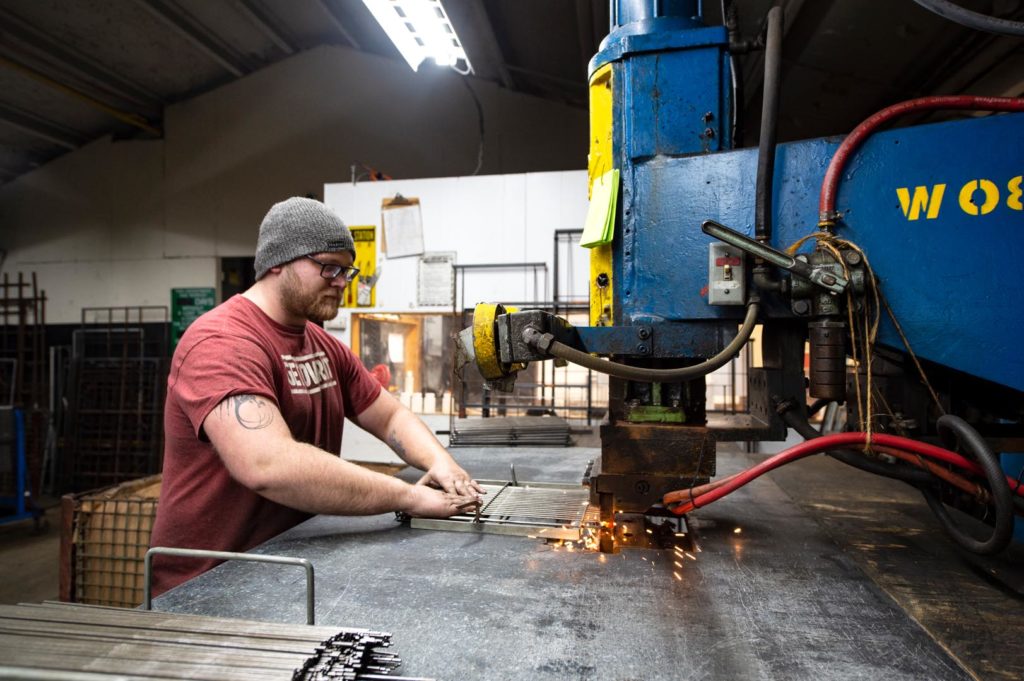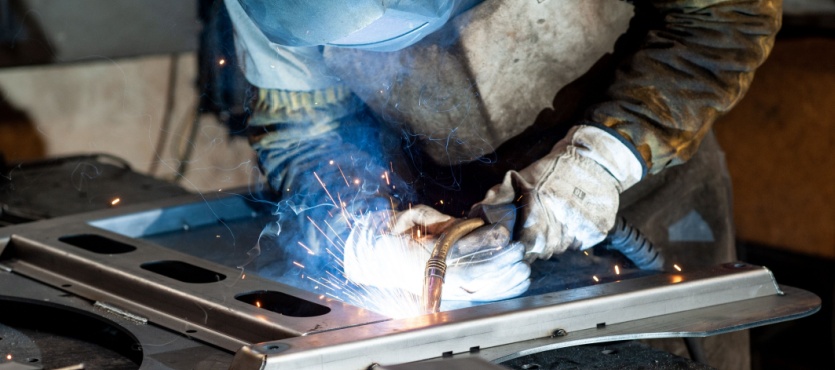Signs of weld failure and what Belgrade can do about them
Wiki Article
Common Welding Fixing Issues and Just How to Address Them Effectively
Welding repair services usually come across an array of issues that can threaten the stability of the final item. Typical problems include poor penetration, porosity, and misalignment, among others. Each defect provides unique challenges that need specific methods for resolution. Recognizing these problems is important for welders aiming to enhance their outcomes and skills. This discussion will certainly explore these common welding fixing issues and effective approaches to resolve them.Insufficient Penetration
Inadequate infiltration takes place when the weld steel fails to completely fuse with the base product, leading to weak joints and potential architectural failings. This problem usually originates from not enough warmth input, inaccurate electrode angle, or improper welding speed. Welders may encounter insufficient infiltration because of a mistake of the required parameters for a particular product thickness or kind. In addition, contamination on the base material's surface can impede efficient bonding, intensifying the issue. To resolve inadequate penetration, welders must assure proper setups on their tools and maintain a tidy work surface area. Normal assessment of welds is recommended to recognize any type of shortages early, permitting timely modifications and the avoidance of compromised structural stability in welded assemblies.Porosity
Porosity is a typical defect in bonded joints that manifests as little gas bubbles caught within the weld metal. This flaw can jeopardize the honesty of the weld, bring about decreased stamina and possible failing under stress and anxiety. Belgrade Welding. Porosity typically occurs from contamination, dampness, or incorrect welding methods, which permit gases to escape into the liquified weld pool. To resolve porosity, welders should guarantee appropriate surface area preparation, keep a clean workplace, and use ideal welding specifications. In addition, selecting the best filler material and protecting gas can alleviate gas entrapment. Routine evaluation and testing of welds can aid determine porosity early, assuring timely restorative actions are taken, thus protecting the high quality and integrity of the bonded structureMisalignment
Misalignment in welding can arise from different variables, consisting of inappropriate arrangement and thermal growth. Recognizing the source is necessary for reliable resolution. Numerous correction techniques are offered to straighten components and guarantee architectural honesty.Reasons for Imbalance
Welding misalignment commonly comes from a variety of underlying issues that can jeopardize structural honesty. One main reason is incorrect fit-up of components before welding, which can cause spaces and uneven surface areas. Variants in thermal expansion during the welding procedure can likewise lead to distortion, particularly if the materials being signed up with have different coefficients of expansion. Furthermore, insufficient securing and fixturing might fail to hold parts firmly in position, bring about movement throughout welding. Badly conserved devices, consisting of welding machines and devices, might present variances in the weld bead, more contributing to imbalance. Driver mistake, stemming from insufficient training or experience, can additionally play a significant function in creating misaligned welds.
Adjustment Techniques Available
Resolving misalignment properly needs a mix of rehabilitative methods customized to the particular problems handy. One typical technique is using components or jigs to hold components in the right position throughout welding, making sure consistent positioning. Additionally, preheating the products can assist lower distortion and improve fit-up. For substantial imbalance, mechanical realignment techniques, such as making use of hydraulic jacks or clamps, can be used to remedy the position before welding. Post-weld warm treatment may additionally be necessary to ease stress and anxieties brought on by imbalance. Lastly, cautious assessment and modification throughout the arrangement phase can stop imbalance issues from ending up being significant problems, advertising a smoother welding procedure and improving overall architectural honesty.Distortion
Distortion is a typical challenge in welding that can develop from numerous aspects, consisting of irregular heating and cooling. Recognizing the root causes of distortion is essential for implementing efficient avoidance strategies. Addressing this issue not just enhances architectural integrity yet additionally improves the overall top quality of the weld.Sources of Distortion
When based on the intense heat of welding, products usually undergo adjustments that can lead to distortion. This sensation primarily emerges from thermal development and tightening during the welding procedure. As the weld area heats up, the product broadens; upon air conditioning, it acquires, which can produce inner tensions. Furthermore, unequal home heating throughout a workpiece can aggravate these anxieties, causing bending or flexing. The sort of product likewise plays a substantial role; metals with differing thermal conductivity and coefficients of expansion might react differently, causing unforeseeable distortions. In addition, inadequate joint style and insufficient fixturing can contribute to misalignment throughout welding, increasing the chance of distortion. Recognizing these reasons is vital for effective welding repair work and avoidance methods.Avoidance Techniques
Efficient avoidance methods for distortion during welding concentrate on regulating heat input and guaranteeing correct joint design. Keeping a constant warm input assists to reduce thermal development and contraction, which can lead to distortion. Utilizing strategies such as preheating the work surface can also decrease the temperature gradient, promoting uniform home heating. Furthermore, picking suitable joint layouts, such as T-joints or lap joints, can boost security and reduce tension focus. Implementing proper fixturing to safeguard the work surfaces in position further aids in preserving placement during the welding procedure. Lastly, staggered welding series can distribute heat more equally, stopping localized distortion. By using these methods, welders can greatly reduce the likelihood of distortion and boost the overall top quality of their welds.Breaking
Fracturing is an usual problem come across in welding repair services, often resulting from various variables such as incorrect air conditioning prices, material option, or inadequate joint prep work. The occurrence of fractures can substantially jeopardize the honesty of the weld, causing possible failings throughout procedure. To resolve this concern, welders must initially assess the origin, making certain that products work and appropriately chosen for the particular application. Furthermore, regulating the cooling rate during the welding process is vital; quick air conditioning can induce anxiety and bring about splitting. Proper joint layout and prep work additionally add to minimizing the danger. Carrying out these approaches can boost weld top quality and resilience, inevitably reducing the chance of cracking in finished weldments.
Insufficient Combination
A significant problem in welding repair work is incomplete combination, which happens when the weld metal does not adequately bond with the base product or previous weld passes - Montana Mobile Welding and Repair Belgrade Fabrication. This flaw can cause weak points in the joint, potentially endangering the honesty of the bonded framework. Factors adding to insufficient blend consist of inadequate warmth input, incorrect welding method, and contamination of the surfaces being signed up with. To address this issue successfully, welders should ensure correct pre-weld cleaning and surface preparation, along with adjust their welding specifications to achieve appropriate infiltration and fusion. Regular assessment during the welding procedure can additionally assist determine incomplete fusion early, permitting timely rehabilitative steps to boost the total top quality of the weldOverheating
While welding repair services can boost architectural stability, overheating offers a considerable see this site challenge that can cause material destruction. Extreme warm during welding can change the mechanical homes of metals, resulting in decreased toughness, boosted brittleness, and warping. This sensation is especially vital in high-stress applications where structural dependability is paramount. Recognizing getting too hot can entail visual evaluations for discoloration or distortion, in addition to keeping track of temperature during the welding process. To minimize the risks related to overheating, welders ought to employ proper methods, such as regulating warmth input, changing traveling speed, and making use of ideal filler materials. Furthermore, applying pre- and post-weld heat therapies can help bring back material residential clarke welder or commercial properties and enhance the overall quality of the repair, making certain long-lasting efficiency and security.Often Asked Questions
What Are the Usual Indicators of a Welding Problem?

How Can I Check My Welds for Top quality?
To evaluate welds for top quality, one can use visual inspections, ultrasonic testing, and radiographic methods. Each strategy guarantees structural honesty, recognizes problems, and verifies adherence to specified standards, ultimately boosting the reliability of the bonded joints.What Security Safety Measures Should I Take While Welding?
When welding, one must prioritize security by using suitable individual protective equipment, making sure correct ventilation, protecting combustible materials away, maintaining a tidy work area, and knowing environments to stop injuries and accidents.Can I Fix a Weld Without Redoing the Entire Joint?
Repairing a weld without redesigning the entire joint is possible, relying on the damages (Belgrade). Strategies such as grinding, adding filler material, or using a welding procedure can efficiently deal with details flaws while protecting the surrounding frameworkWhat Devices Are Vital for Efficient Welding Repair Works?
Important devices for reliable welding repair work include a welding machine, cable brush, mill, protective gear, clamps, and filler products. Each tool plays an important role in making certain high quality and safety during the repair work procedure. Porosity commonly emerges from contamination, moisture, or inappropriate welding techniques, which allow gases to leave right into the liquified weld swimming pool. Inadequately maintained devices, consisting of welding makers and tools, might introduce incongruities in the weld bead, further adding to misalignment. When subjected to the extreme warm of welding, products usually undergo modifications that can lead to distortion. Cracking is a common issue come across in welding fixings, commonly resulting get redirected here from different factors such as incorrect cooling prices, product choice, or insufficient joint preparation. A considerable problem in welding repair services is insufficient fusion, which takes place when the weld steel does not adequately bond with the base product or previous weld passes.Report this wiki page